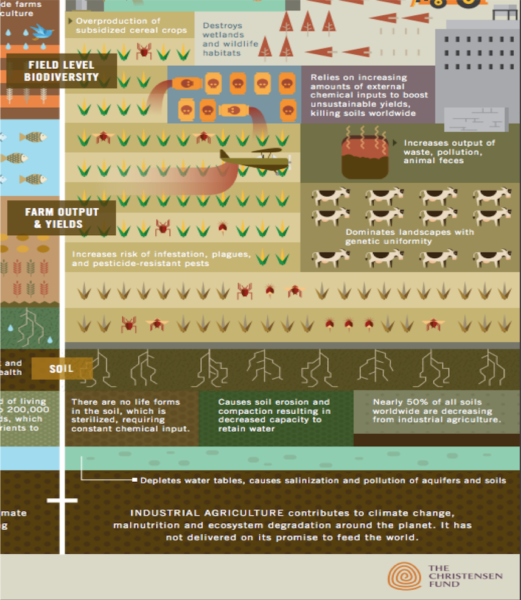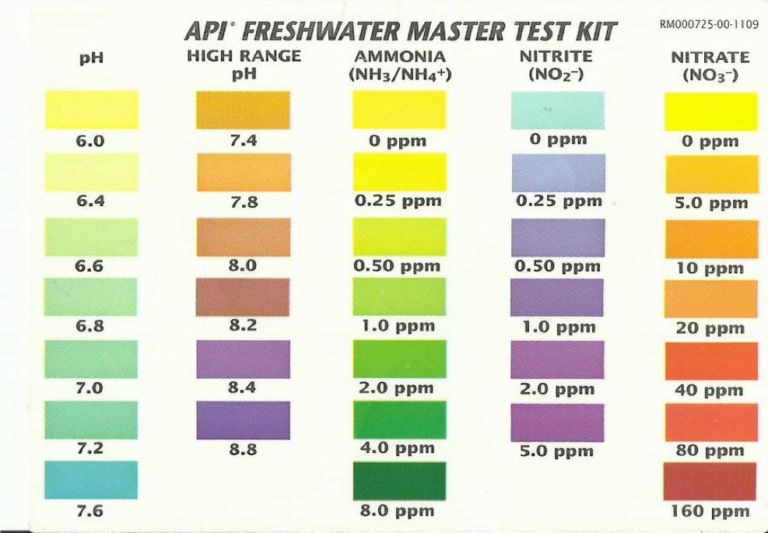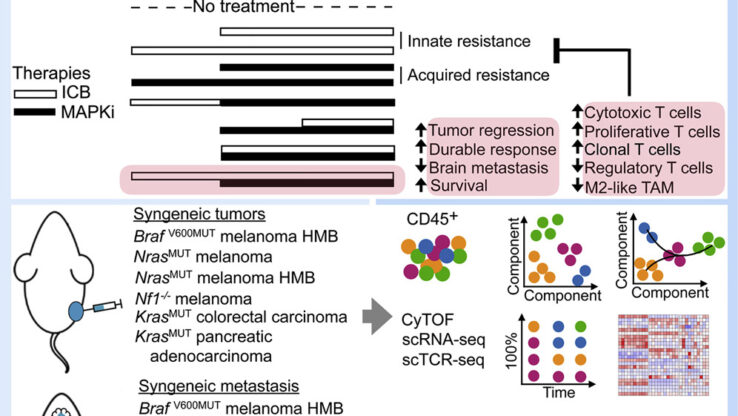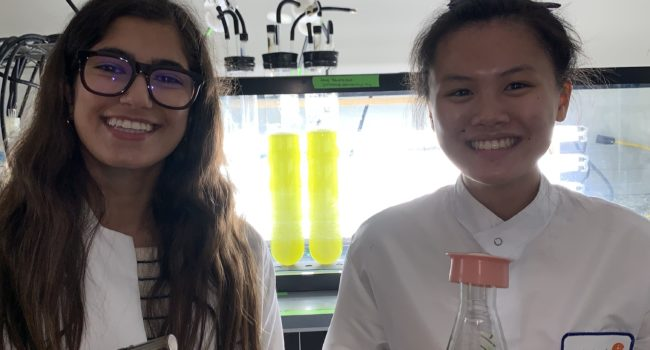Aquaponics – Introduction
 see.isbscience.org/curriculum/community-contributed/aquaponics-introduction/
see.isbscience.org/curriculum/community-contributed/aquaponics-introduction/
Introduction
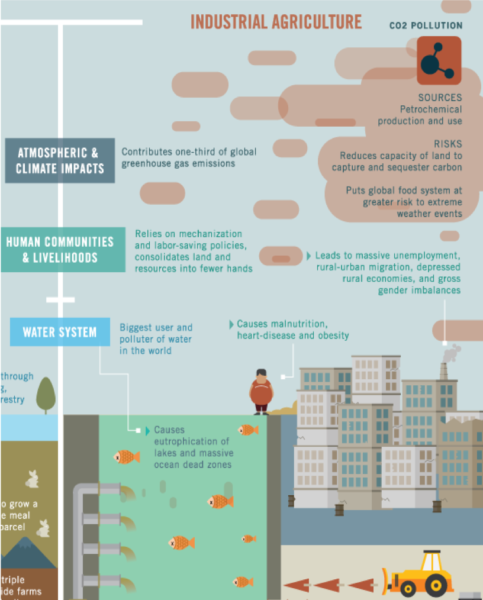
Diminishing arable land, water shortage, and expected population growth to 10 billion portend a catastrophic food security crisis by 2030. This threat requires a dramatic reduction of the environmental footprint of agricultural practices. A paradigm shift to the food supply chain is necessary to meet an expected 70% or more increase in food demand.
Modern Agricultural practices such as monocropping, chemical fertilizers/pesticides, and genetically modified produce could be used to meet this growing demand. However these practices are unsustainable, costly, and harmful to the environment.
Negative impacts of unsustainable agriculture includes:
Poverty, Food cost, and Food Security
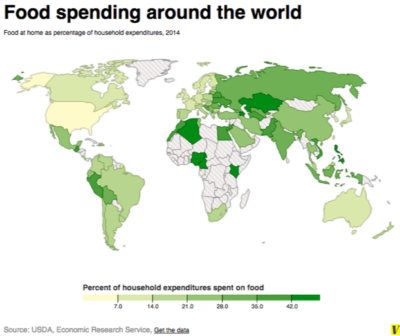 The cost and availability of food is an additional concern. Spending of household income on food varies dramatically by country. When international food availability decreases or food cost increase the impoverished will be impacted the most. Consider the graph to the right showing the amount of household income spent on food by country.
The cost and availability of food is an additional concern. Spending of household income on food varies dramatically by country. When international food availability decreases or food cost increase the impoverished will be impacted the most. Consider the graph to the right showing the amount of household income spent on food by country.
Why is food cost in the United states so much lower than the rest of the world?
Aquaponics: A sustainable solution to our global food crisis
It’s a system that combines aquaculture (fish farming) and hydroponics (growing plants in water) in a mutually beneficial environment. The fish excretion is broken down by nitrogen fixation, which provides nutrients essential to plant growth. This process serves as a natural fertilizer for the plants. In return, the plants help purify the water for the fish. Up to 98 percent of the water is recycled in this system.
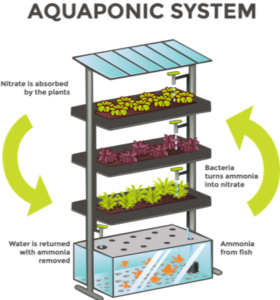
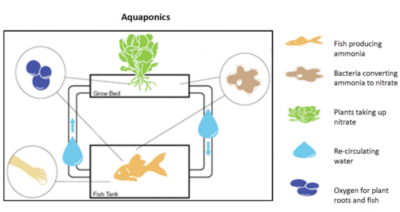 This semester you will be maintaining a small scale aquaponic system using a design provided to you by your teacher. Next semester you will be encouraged to improve upon this design and create your own. Many of the concepts involved in this lab will be learned throughout the school year so do not get discouraged if you get lost or are confused! Research and ask questions!
This semester you will be maintaining a small scale aquaponic system using a design provided to you by your teacher. Next semester you will be encouraged to improve upon this design and create your own. Many of the concepts involved in this lab will be learned throughout the school year so do not get discouraged if you get lost or are confused! Research and ask questions!
The 3 main components of an aquaponics system are: Plants, Fish, and Bacteria
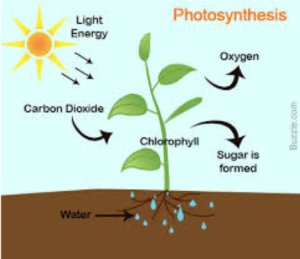 Plants: You will grow a leafy vegetable of your choosing for this project.
Plants: You will grow a leafy vegetable of your choosing for this project.
Plants require light, water, a substrate to attach to, and nutrients such as nitrogen through nitrites and nitrates to flourish and metabolize. The waste produced by plants is oxygen.
Fish: Your aquaponic system will use fish commonly found at pet stores such as goldfish, minnows, and goldfish.
Fish require food such as algae flakes and clean oxygen rich water to survive. The waste produced by fish is ammonia. High levels of ammonia are toxic to fish.
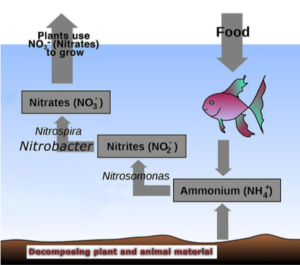 Bacteria: Bacteria are essential for productive soils and aquaponic systems. Bacteria in soils and aquaponic systems metabolize ammonia and convert it into nitrites and nitrates usable by plants. These bacteria are known as nitrifying bacteria.
Bacteria: Bacteria are essential for productive soils and aquaponic systems. Bacteria in soils and aquaponic systems metabolize ammonia and convert it into nitrites and nitrates usable by plants. These bacteria are known as nitrifying bacteria.
Examine the image of the aquaponics system you will be building below and use the information above to answer the following questions.
1.Identify the chemical inputs and outputs for each of the following
a. Fish b. bacteria c. plants
2.Identify the path of nitrogen transformation in an aquaponics system
3. Examining the overall aquaponic system. How much and what type of energy/inputs go into the system? Exit the system?
Model of your aquaponic system
Directions
First day: Assembly
- Obtain the materials outlined above.
- Rinse gravel and place enough in the jar to cover approximately ½ inch of the bottom of the jar
- Fill the mason jar 3/4th’s of the way full with water. Note: Water should have been left in an open container for 48-72 hours before using to allow chlorine gas to diffuse out of water before use.
- Obtain one black plastic cup. Use a hole puncher to cut 2 sets of 2 parallel holes under the lip of the cup as shown by the aquaponic system model above. These holes will hold the chopsticks/bamboo skewers that keep your cup in place.
- Cut slits along the side of the cup using scissors and poke small holes into the bottom of the cup. Be careful to make your slits large enough to allow water to flow through the cup but small enough to hold clay pellets.
- Fill up the cup 3/4th with clay pellets and insert the chop sticks through the holes you have made. Place the cup into your mason jar.
- Add more water to the mason jar until at least ½ of the cup is submerged in water.
- Carefully pick up and place your assembled aquaponic system in the determined grow area. (For this experiment the grow area was a classroom lab table with LED grow lights suspended on a pvc light frame)
- Obtain black aquarium tubing (why do you think the tubing is black?) and measure the length of tubing you will need to run the tubing from the air pump to the bottom gravel as pictured on the model of your aquaponic system. Cut the tubing at this length.
- Attach the air pump to one end of the measured and cut tubing and place an air stone on the other end. Place the airstone into your system and turn the air pump on. Your airstone should now produce a steady stream of bubbles (what do you think the airstone contributes to your system?).
- Label your jar and leave it in the grow area with the air pump on. We will return to it once your seeds have germinated.
- Discuss with your groupmates which of the following plant species you would like to grow (you may select up to two varieties). You are encouraged to research each plant to determine the ideal environmental conditions for growing each. Which do you think will grow best in an aquaponic system? Why?
Note: other varieties can be used. The list below is what was used in this specific lab successfully.
We used this seed variety pack
-Arugula, Kale, Lolla Rossa Lettuce, Buttercrunch Lettuce, Gourmet Mix Lettuce, Spinach, Swiss Chard
- Obtain 2-3 seeds of each plant variety you select (six maximum) and record the species you have chosen.
- Your seeds will need to germinate before you can add them to your system. To do so follow one of the two following procedures:
Procedure A (Outlined in this video):
I. Obtain germination starter plugs and a small container of dechlorinated water. Add pH down to the water until you achieve a pH of 5.5.
II. Soak start plugs in the water for 10 seconds and place them onto growing tray. Do not squeeze plugs after soaking them.
III. Place one seed into each plug
IV. Cover tray with dome and place in the dark for 48 hours.
V. After 48 hours place the tray under grow light
Procedure B:
I. Obtain paper towels and ziplock bags.
II. Wet paper towel and place it into the ziplock bag.
III. Place seeds onto paper towel and leave in a dark place for 48 hours.
IV. After 48 hours place the ziplock back under grow light
- Continue growing until your seedlings have grown roots that are at least 1 inch long. Once this growth has been obtained progress to second day directions.
Directions
Second day: Final Assembly, Initial Water Testing, and Data Collection Set-up
- Make a copy of this file, share it with your group mates, AND PUT EVERYONE'S NAMES IN THE TITLE!
- Every Monday and Friday in class you will:
- Test the water quality and temperature of your system and record data in your google sheet
- Record observations on your plants and fish
- Make necessary changes to your system to maintain the nitrogen cycle and healthy plants/fish
- Reflect on any changes you observe in your nitrogen cycle graph (see the nitrogen cycle graph tab on your groups spreadsheet)
 Let's make the first of the water content measurements you will make. You will test the high pH, Nitrite, Nitrate, and Ammonia contents of your system by using an API freshwater master test kit. Note: API test strips can alternatively be used. API freshwater master test kits were selected for this experiment because of low cost and high frequency of water testing. Photo credit: API
Let's make the first of the water content measurements you will make. You will test the high pH, Nitrite, Nitrate, and Ammonia contents of your system by using an API freshwater master test kit. Note: API test strips can alternatively be used. API freshwater master test kits were selected for this experiment because of low cost and high frequency of water testing. Photo credit: API
- Obtain an eye dropper/pipette and an API freshwater master kit. Follow the directions outlined for each test in the chart below and record your results in your group spreadsheet. Directions are from API freshwater master test kit instructions booklet
| Low pH
(used for pH of 6 - 7.6) |
High pH
(Used for pH of 7.4 - 8.8) |
Ammonia | Nitrite | Nitrate |
| 1. Fill test tube with 5 ml of water.
2. Add 3 drops of low pH test solution
3. Cap & invert the test tube several times
4. Read and record results using color chart |
1. Fill test tube with 5 ml of water.
2. Add 5 drops from of high pH test solution
3. Cap & invert the test tube several times
4. Read and record results using color chart |
1. Fill test tube with 5 ml of water.
2. Add 8 drops from Ammonia Test Solution #1
3. Add 8 drops from Ammonia Test Solution #2
4. Cap & shake for 5 seconds.
5. Wait 5 minutes for the color to develop.
6. Read and record results using color chart |
1. Fill test tube with 5 ml of water.
2. Add 5 drops of Nitrite Test Solution.
3. Cap & shake for 5 seconds.
4. Wait 5 minutes for the color to develop.
5. Read and record results using color chart |
1. Fill test tube with 5 ml of water.
2. Add 10 drops from Nitrate Test Solution #1
3. Cap & invert tube several times
4.Shake the Nitrate Test Solution #2 for 30 seconds.
5. Add 10 drops from Nitrate Test Solution #2, cap, & shake for 1 minute
6. Wait 5 minutes for the color to develop
7. Read and record results using color chart |
Color Chart obtained from API freshwater master test kit instructions booklet
- Obtain a thermometer, test, and record the temperature of your system.
- Examine your results. Did your water test demonstrate that the water is safe for fish? How do you know?
- If, and only if, your water is safe, add two small goldfish to your system using the floating method of fish acclimation. Why is it so important to acclimate your fish before adding them to the water?
Floating method:
- Float bag of fish in the system for 15 minutes
- Cut open the top of the bag to leave an air bubble. Allow the cut bag to float. Add half of a cup of water from your aquaponic system to the bag, wait 4 minutes, then add another half of cup, wait 4 minutes, and repeat until the bag is completely full.
- Discard half of the water in the bag and repeat step II
- Release the fish into the tank using a net. Remove plastic bag.
- Obtain a small piece of sponge and add nitrifying bacteria to it as recommended by the nitrifying bacteria bottle (Using API Quick Start with 1 gallon mason jars requires 1 ml of nitrifying bacteria). Place the sponge piece into the grow substrate of your system and make sure the sponge is fully submerged in your water. Why are nitrifying bacteria essential for the success of your system? Why are they kept on a sponge in the growing media?
- If your seedlings have grown roots that are at least one inch long remove your plant seedlings and delicately place them into the clay substrate of your system. Try to have only the roots of your seedlings touch the water in your cup. Submerged plants would have a difficult time establishing themselves in your system (plants can drown too!).
- It is essential that you make no changes until your system has completed nitrogen cycling!
 As your fish, nitrifying bacteria, and plants engage in their first nitrogen cycle you should observe the following sequence of changes:
As your fish, nitrifying bacteria, and plants engage in their first nitrogen cycle you should observe the following sequence of changes:
I. Ammonia will be first to appear
(why would this be?)
II. Nitrite will appear and Ammonia will begin to decrease (what is causing this to happen?)
III. Nitrate will appear and increase as Nitrite and Ammonia decrease to zero (what uses Nitrate?)
Continue to test and record data (and feed your fish!) until you receive a reading of 0 ppm Ammonia, 0 ppm Nitrite, and a reading of greater than 0 ppm Nitrate. Your groups Nitrogen cycle graph will look similar to the diagram above when this is achieved. (Why is it important to wait for the nitrogen cycle to complete before making any changes to your system?)
Once full nitrogen cycling is complete in your system progress to the third day directions below.
Directions
Third day: Managing a changing system & the Project Feed 1010 Community
- Now that you have an established aquaponic system with a complete nitrogen cycle you will begin to observe changes in your system.
What should you do if the pH goes down? Ammonia goes up? Nitrate goes down? Plants begin to wilt?
It is up to you and your group mates to discover what is causing these changes and to decide what actions you will take to maintain a healthy, functioning aquaponics system!
This will be a very challenging balancing act as the needs of your fish and plants will be different and change over time! For example, a reading of 0 ppm Nitrate is ideal for your goldfish but is far from good for your plants as they require Nitrate for nutrition. How would you adjust your system to resolve such a change?
To help you in your decision making consider the following healthy parameters for goldfish (adapted from API 5 in 1 aquarium test strips water test results chart). Keep in mind that these parameters are only for your goldfish. They do not include what is ideal for your plants or what affects the number and types of plants you grow will have on your system. Your research and experience will be your guide for such information.
Goldfish Parameters Table
| Test | Ranges | Recommendation | ||||||
| pH | 6.0 | 6.5 | 7.0 | 7.5 | 8.0 | 8.5 | 9.0 | Use pH up or pH down
(or safe natural alternative) |
| Temp (F) | 60 | 65 | 70 | 75 | 80 | 85 | 90 | Add/adjust heater or move system to cooler location |
| Ammonia | 0 | 0.25 | 0.5 | 1.0 | 2.0 | 5.0 | Partial water change & add quick start nitrifying bacteria | |
| Nitrite | 0 | 0.5 | 1.0 | 3.0 | 5.0 | 10.0 | Partial water change & add quick start nitrifying bacteria | |
| Nitrate | 0 | 20 | 40 | 80 | 160 | 200 | Partial water change with unadjusted DI water | |
| Table Key: | Ideal | Caution (Monitor) | Danger |
- For every change you make to your system record in your groups spreadsheet the changes you make, a rationale for the change (why did you take the action you did? What do you hope will occur?) and your observations on the effects the change had.
Science is a collaborative process. You are strongly encouraged to discuss and share your problems/data/changes/strategies with other student groups. They may have already tried something that would help balance your system! Your expertise may have revealed an insight they have yet to make!
- As you grow be mindful to research and act upon the ideal time for harvesting your crops. Harvesting too soon will produce underdeveloped and bad tasting produce whereas harvesting too late will cause flowers and seeds to develop. Additionally the removal of plants will have a significant impact on your system (what do you think it will change?) so sure to create a plan of action to address such changes whenever you harvest!
- When is your project complete? Short answer: not anytime soon. Remember that after producing successful harvests this semester you will be challenged to design and create a more efficient and sustainable system next semester. This is why it is essential that you record detailed observations, report on the causes of any changes you see, and explain the effects of the actions you take have. Engineers always seek to refine and improve their solutions to problems. So too will you apply your scientific knowledge to refine aquaponics as a solution to our global needs for sustainable agriculture.
- .Project Feed 1010 is a branch of the Institute for Systems Biology that promotes collaborative research on aquaponics to improve our abilities to meet the world's food and sustainability crises. As part of their research they host a collaborative citizen science community designed for researchers such as yourselves to publish their findings and collaborate with peers for improving aquaponic systems and designs.
Please join their community and publish your findings at https://pf1010.systemsbiology.net/ . Your contributions directly contribute to improving sustainable agriculture to meet the needs of our growing food crisis!
Resources
Useful Resources/Links
- Apes Student Designs
- Detailed information and images for student designs
- APES 2017-2018 Aquaponics Data
- Data from student Aquaponics systems



